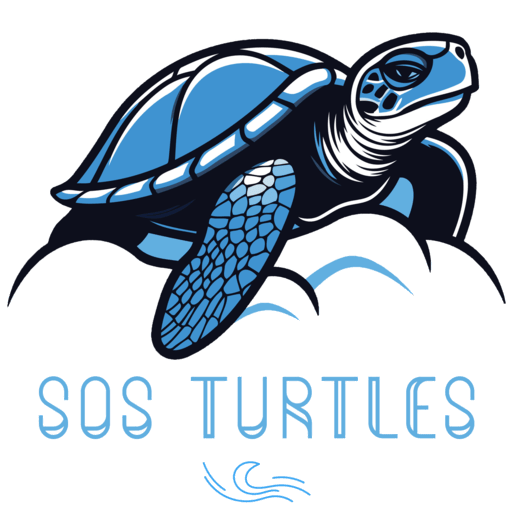Panama’s sea turtles represent some of the most magnificent marine creatures in our waters, with five distinct species calling our coastlines home. At SOS Turtles, we’re committed to protecting these remarkable reptiles through research, conservation, and community engagement, ensuring their survival for generations to come.
Table of Contents
Introduction to Panama’s Sea Turtle Species
The waters surrounding Panama serve as crucial habitats for five of the world’s seven sea turtle species. Each species plays a vital role in maintaining the health of our marine ecosystems, from coral reefs to seagrass beds. Here at SOS Turtles, we work tirelessly to understand and protect these incredible animals.
1. Leatherback Sea Turtle (Dermochelys coriacea)
Physical Characteristics
- Largest of all sea turtles
- Length: 6-7 feet
- Weight: Up to 1,500 pounds
- Distinct leathery shell with seven ridges
- Dark coloration with white spotting
Behavior and Diet
The leatherback, one of Panama’s sea turtles most commonly seen in our Pacific waters, is unique in its ability to maintain warm body temperatures in cold water. These remarkable creatures:
- Dive deeper than any other sea turtle (up to 4,000 feet)
- Feed primarily on jellyfish and soft-bodied organisms
- Travel the greatest distances of any sea turtle species
Nesting in Panama
Leatherbacks typically nest on Panama’s Pacific coast between October and March. SOS Turtles monitors several crucial nesting beaches where these ancient mariners return year after year.
2. Green Sea Turtle (Chelonia mydas)
Physical Characteristics
- Named for the green color of their fat, not their shell
- Length: 3-4 feet
- Weight: 300-350 pounds
- Heart-shaped shell
- Small head relative to body size
Behavior and Diet
Among Panama’s sea turtles, green turtles are unique as adults for being primarily herbivorous:
- Feed on seagrasses and algae
- Help maintain healthy seagrass beds
- Often seen in shallow coastal waters
Nesting in Panama
Green turtles nest year-round in Panama, with peak season between June and September. SOS Turtles has identified several key nesting beaches along both the Caribbean and Pacific coasts.
3. Hawksbill Sea Turtle (Eretmochelys imbricata)
Physical Characteristics
- Distinctive hawk-like beak
- Beautiful amber-colored shell with intricate patterns
- Length: 2-3 feet
- Weight: 100-150 pounds
Behavior and Diet
These critically endangered members of Panama’s sea turtles population are crucial for coral reef health:
- Feed primarily on sponges
- Help maintain coral reef diversity
- Known for their agility in reef environments
Nesting in Panama
Hawksbills nest throughout the year in Panama, with heightened activity between April and September. SOS Turtles monitors several critical nesting sites in the Bocas del Toro region.
4. Loggerhead Sea Turtle (Caretta caretta)
Physical Characteristics
- Large head with powerful jaws
- Reddish-brown shell
- Length: 3-4 feet
- Weight: 175-350 pounds
Behavior and Diet
Among Panama’s sea turtles, loggerheads are known for their strength:
- Feed on hard-shelled prey like crabs and mollusks
- Strong swimmers
- Often found in deeper waters
Nesting in Panama
Loggerheads are less common nesters in Panama but are regularly seen feeding in our waters. SOS Turtles works to protect their foraging grounds and occasional nesting sites.
5. Olive Ridley Sea Turtle (Lepidochelys olivacea)
Physical Characteristics
- Smallest of Panama’s sea turtles
- Olive-colored heart-shaped shell
- Length: 2-2.5 feet
- Weight: 75-100 pounds
Behavior and Diet
Known for their unique mass nesting behavior called “arribadas”:
- Omnivorous diet including jellyfish, crabs, and algae
- Often found in open waters
- Known for synchronized nesting events
Nesting in Panama
Olive Ridleys nest primarily on Panama’s Pacific coast, with peak season between July and December. SOS Turtles monitors several beaches where these mass nesting events occur.
Conservation Status and Threats
All of Panama’s sea turtles face significant challenges:
- Habitat loss due to coastal development
- Climate change affecting nesting beaches
- Plastic pollution in marine environments
- Illegal poaching
- Accidental capture in fishing gear
SOS Turtles’ Conservation Efforts
Our organization is implementing several initiatives to protect Panama’s sea turtles:
- Beach monitoring programs
- Community education and engagement
- Habitat protection efforts
- Research and data collection
- Anti-poaching measures
How You Can Help Protect Panama’s Sea Turtles
Join SOS Turtles in our mission to safeguard these magnificent creatures:
- Support our conservation programs
- Volunteer for beach cleanups
- Report turtle sightings
- Reduce plastic use
- Share knowledge about sea turtle conservation
Educational Resources
Learn more about Panama’s sea turtles through our resources:
- Educational workshops
- School programs
- Community presentations
- Online materials
- Guided beach walks
Conclusion
Panama’s sea turtles represent an incredible natural heritage that SOS Turtles is committed to protecting. Through understanding these five unique species, we can better appreciate their importance and work together to ensure their survival. Join us in our mission to protect these ancient mariners for future generations.
Want to learn more about Panama’s sea turtles or get involved with SOS Turtles? Explore our homepage to learn about our mission, initiatives, and how you can get involved in sea turtle conservation!











